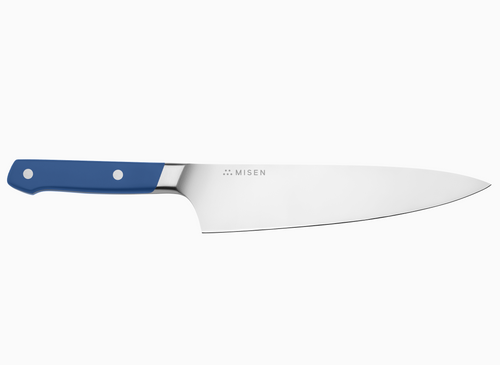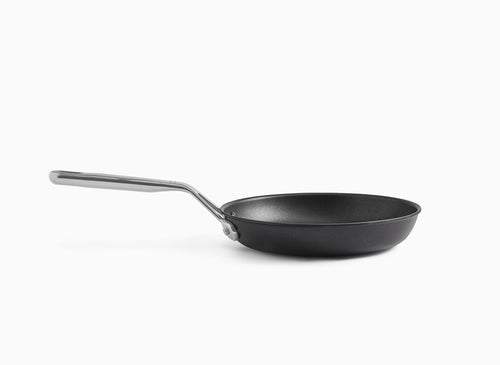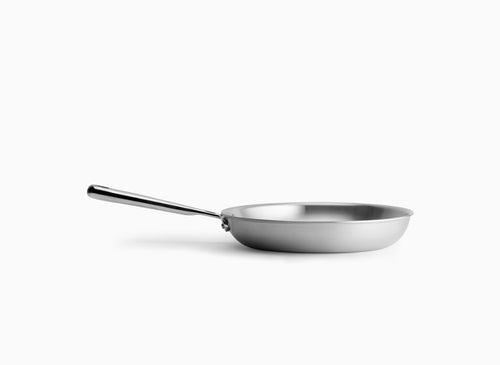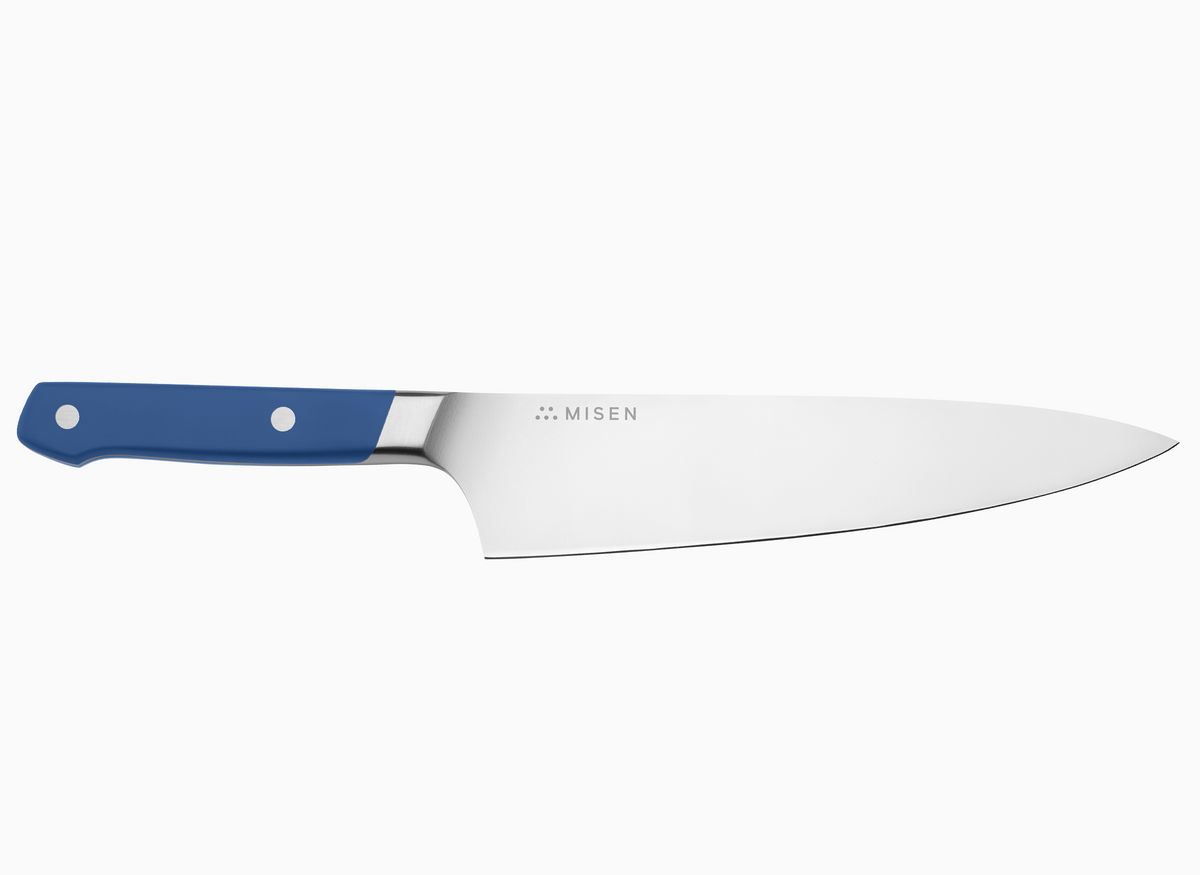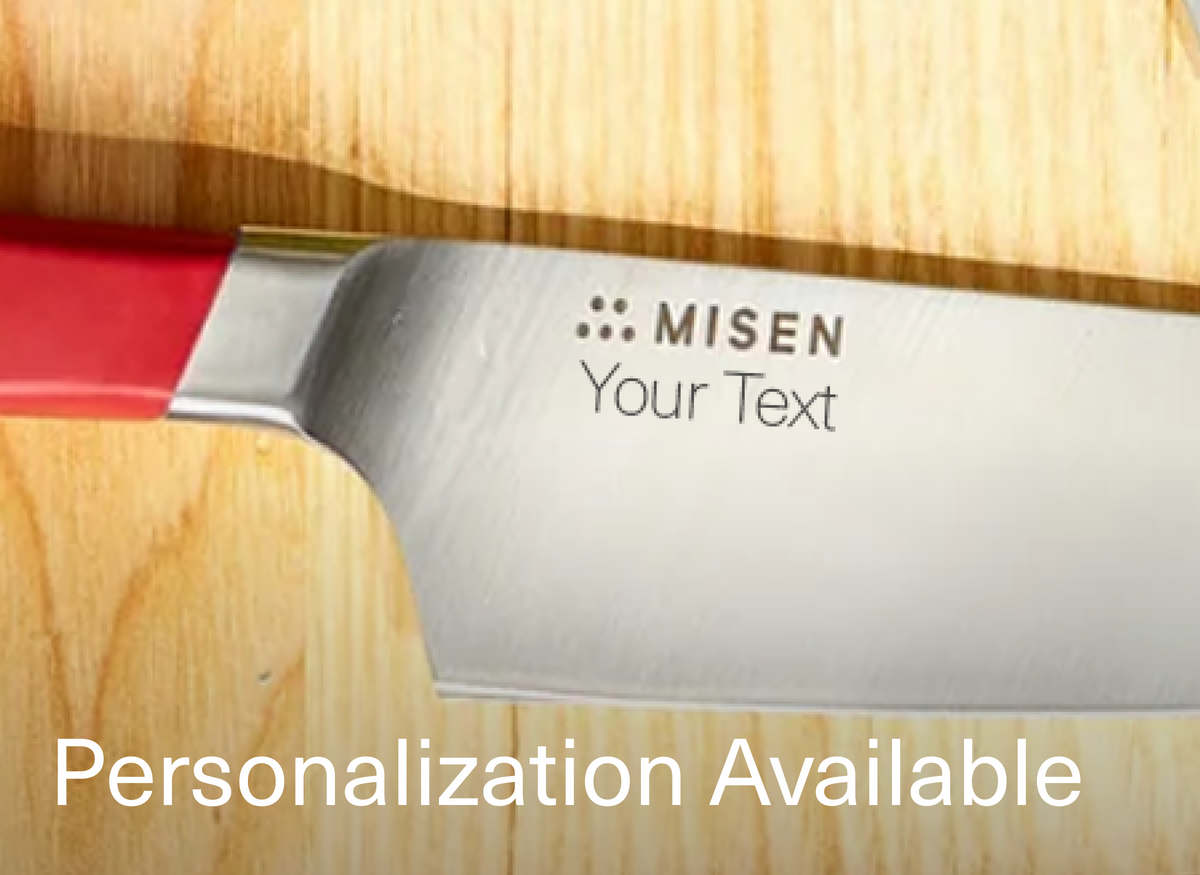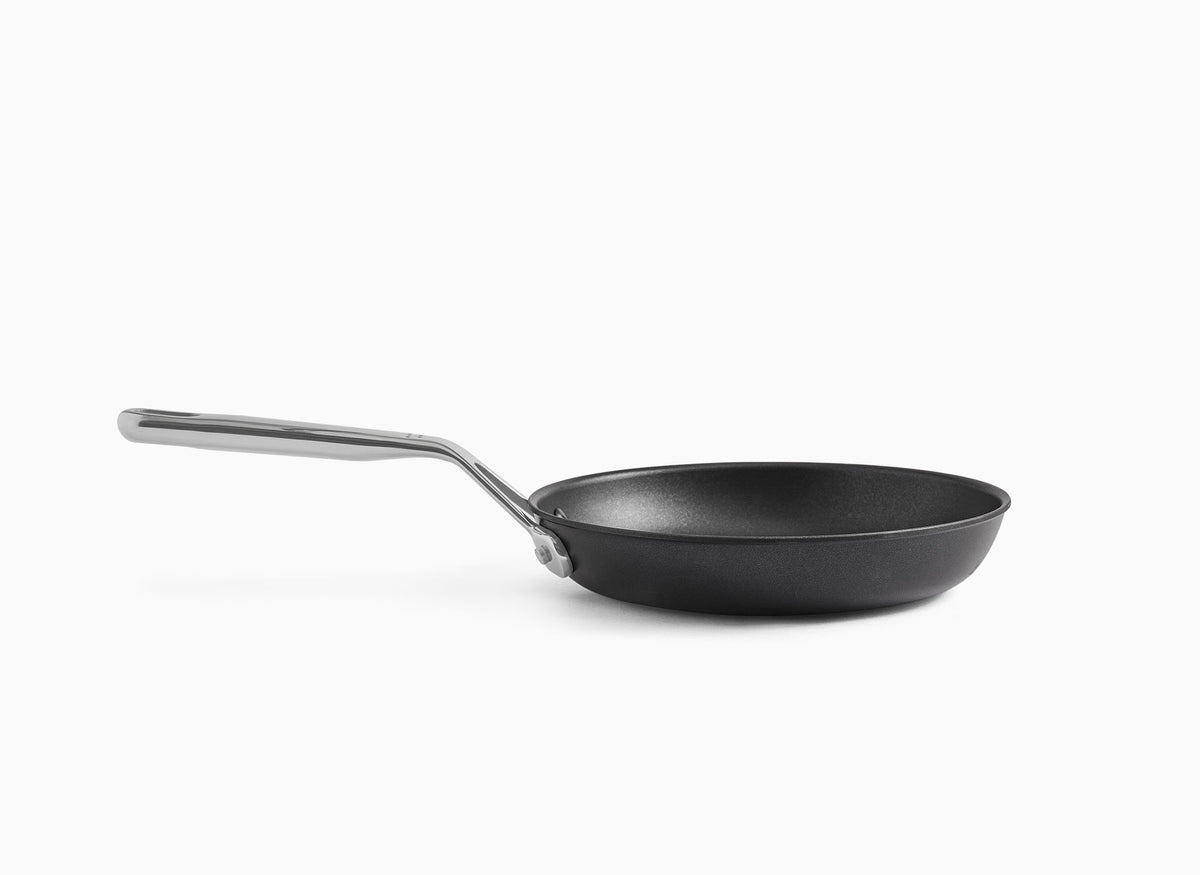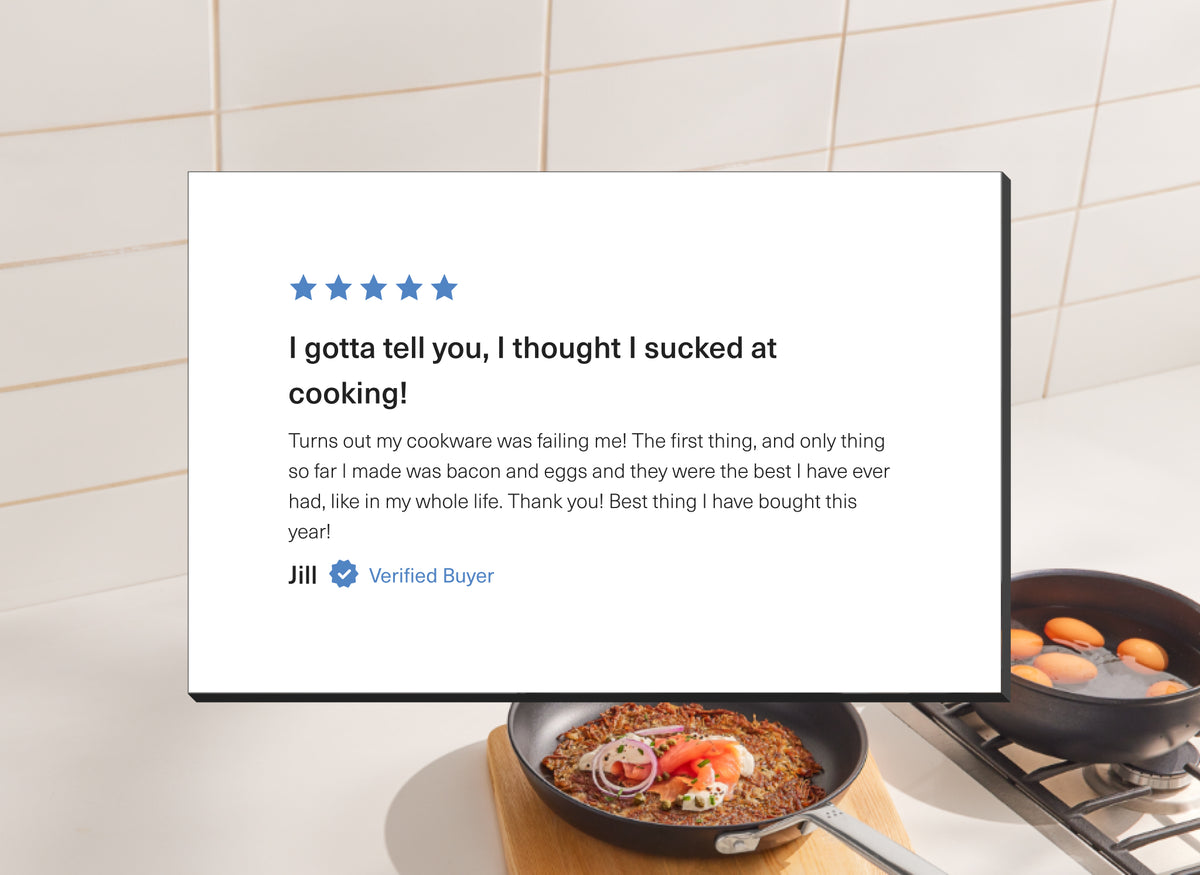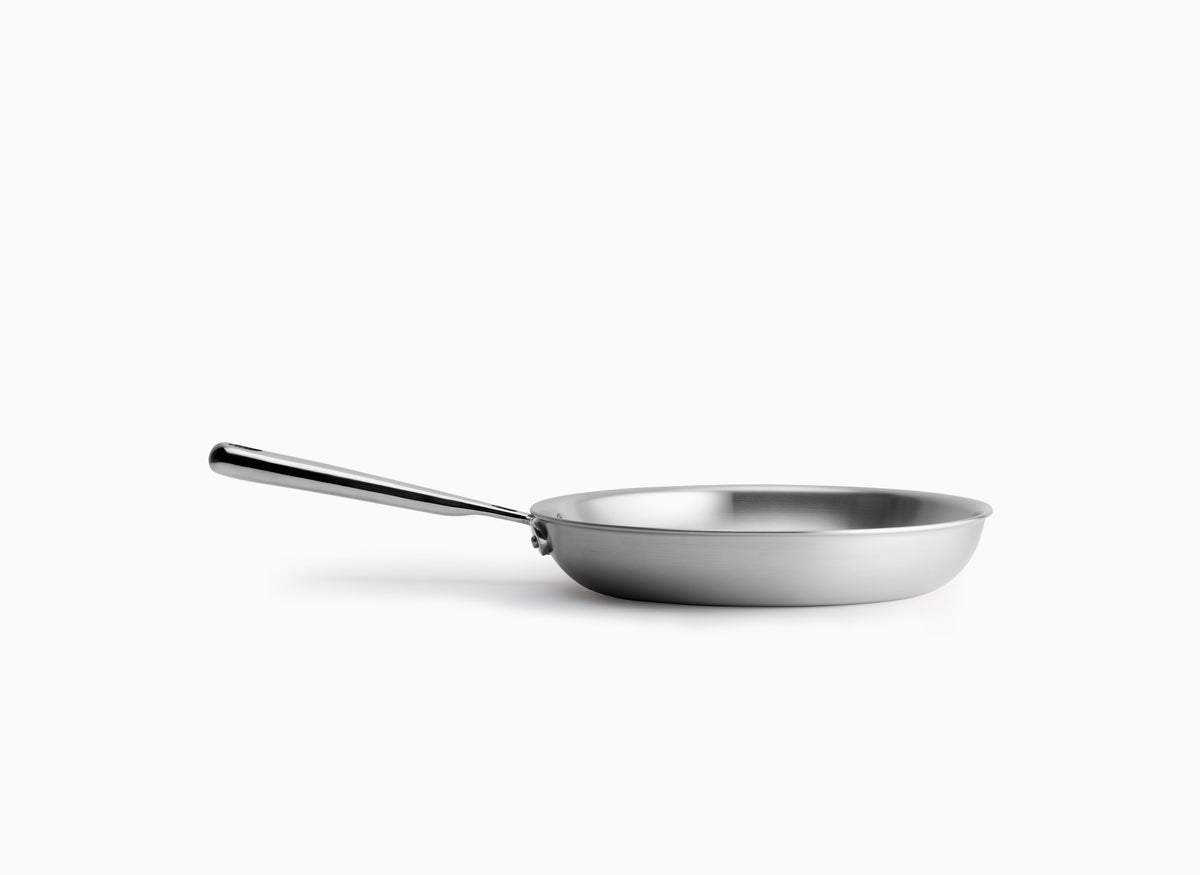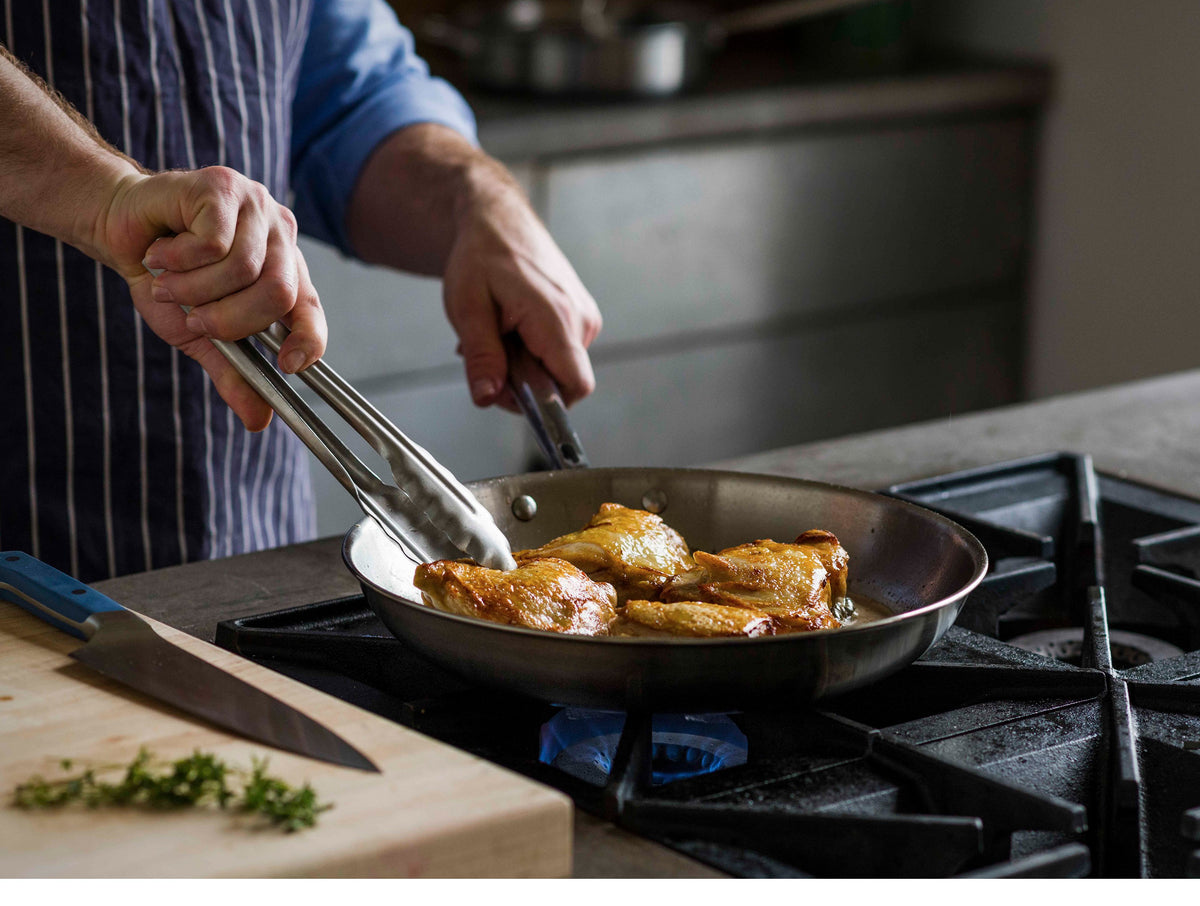What to Look for in a Professional Knife Set
 Most food cutting tasks can be done with either a chef’s knife, a paring knife, or a serrated knife.
Most food cutting tasks can be done with either a chef’s knife, a paring knife, or a serrated knife.
- The three knives essential to any knife set are a chef’s knife, a paring knife, and a serrated knife.
- When looking for a good knife, it’s important to consider its shape and material construction.
- Kitchen knives are usually categorized as having a Western or Japanese design. New hybrid designs, however, marry the best of both.
You don’t have to be a professional cook to own a professional knife set. Whether you’re whipping up boeuf bourguignon or a grilled cheese sandwich, it’s important to have the right knife, gadget, or kitchen tool at your disposal.
Kitchen knives, of course, are one of the most important tools. They stay in your hand throughout most of food prep, and come in contact with almost every ingredient that goes into the dish. A good set of knives is crucial for any home cook, and can make the difference between an enjoyable cooking experience and a daily chore.
Putting together the perfect set, however, takes some consideration. Do you go with a Western or Japanese style design? Should you opt for stainless steel or ceramic? Do you need kitchen shears? Answers and everything else you need to know to purchase a professional kitchen knife set are covered below.
Features of Professional Knives
As far as appearances go, kitchen knives actually seem quite simple — they're basically a blade and a handle. These two parts, however, are responsible for all cutting tasks, and it's important to make sure they're well-made.
The main things to consider in a piece of cutlery are the shape and material. These will guide all other features of the knife, including weight, length, sharpness, and durability.
Shape
When someone says something about a knife’s shape, it’s usually the blade they're talking about. For the most part, blades fall into two categories — Western or Japanese.
Western-shaped knives, also referred to as German knives, are typically curved on the cutting edge side of the blade. This lends itself well to cutting and mincing, as it allows the knife to rock back and forth with ease. Their edge is usually double-beveled, which means it's sharpened on both sides, at an angle of 20-22 degrees.
Another thing to note about Western knives is that they tend to be on the heavier, thicker side — while this enables them to chop through denser ingredients, it can also be an effort to hold after a while. Popular brands that offer Western-style knives are Zwilling J.A. Henckels, Wüsthof, and Victorinox.
Japanese knives, in contrast, have a straighter cutting edge, which makes them ideal for swift chops and cuts. The blades are traditionally single-bevel, and sharpened at a steeper 12-15 degrees. As compared to their Western counterparts, Japanese knives offer a slimmer, lightweight silhouette. Two brands known for Japanese style knives are Shun and MAC.
A few innovative brands (like us!) have started to adopt features from both styles in their own silhouettes. Taking the functional curved shape of Western knives, and applying it to the lighter, sharper blade of Japanese knives, this results in kitchen knives that blend the best of both worlds.
Material
 The material of the blade plays a bit part in the knife’s overall weight, durability, and cutting ability.
The material of the blade plays a bit part in the knife’s overall weight, durability, and cutting ability.
The capabilities of a kitchen knife greatly depend on what they’re made out of. This is usually a natural material, such as metal or clay, that has been designed and engineered to be hard-wearing and long-lasting.
The most popular blade material is stainless steel, an iron alloy with at least 10.5% chromium (and possibly nickel or molybdenum). Resistant to rust and corrosion, and extremely durable, stainless steel blades and are easy to maintain and can last for several years.
High-carbon stainless steel adds a small amount of carbon — generally between 0.5%-2% — to stainless steel, which increases its strength, edge retention, and hardiness. High-carbon stainless steel, however, is more prone to rust and should therefore be hand-washed and dried immediately (and as with all knives, they should never be cleaned in the dishwasher). Nevertheless, high-carbon stainless steel is still the choice material for many professional chefs.
Ceramic is lightweight, yet able to hold a sharp edge longer than most other blade materials. But because ceramic is made from clay, it’s extremely brittle and may chip or shatter if not handled properly. Ceramic also requires special tools for sharpening, so when the time comes that they do feel a bit dull, you will have to take them to a professional knife sharpener.
As for knife handles, the material ranges from natural, such as wood or metal, to synthetic, like plastic or polypropylene. The choice between these are really up to the user — as long as the material is non-slip, and offers a comfortable, ergonomic grip.
Essentials of a Professional Knife Set
Although knife sets today come as large as 16-piece or even 36-piece sets, there’s something to be said about sticking with the essentials. Unless you’re doing a lot of specialized tasks, you won’t get much use out of specialized knives like boning knives, carving knives, and cleavers.
A kitchen should be kept as clean and clutter-free as possible, and paring down is a good way to keep it in order. Besides, rather than having a multiple-piece knife set, most of which you’ll barely use, it’s best to master the select ones you do have instead.
With that in mind, the following three knives are regarded as the top kitchen essentials, and are part of every good, professional cutlery set.
Chef’s Knife
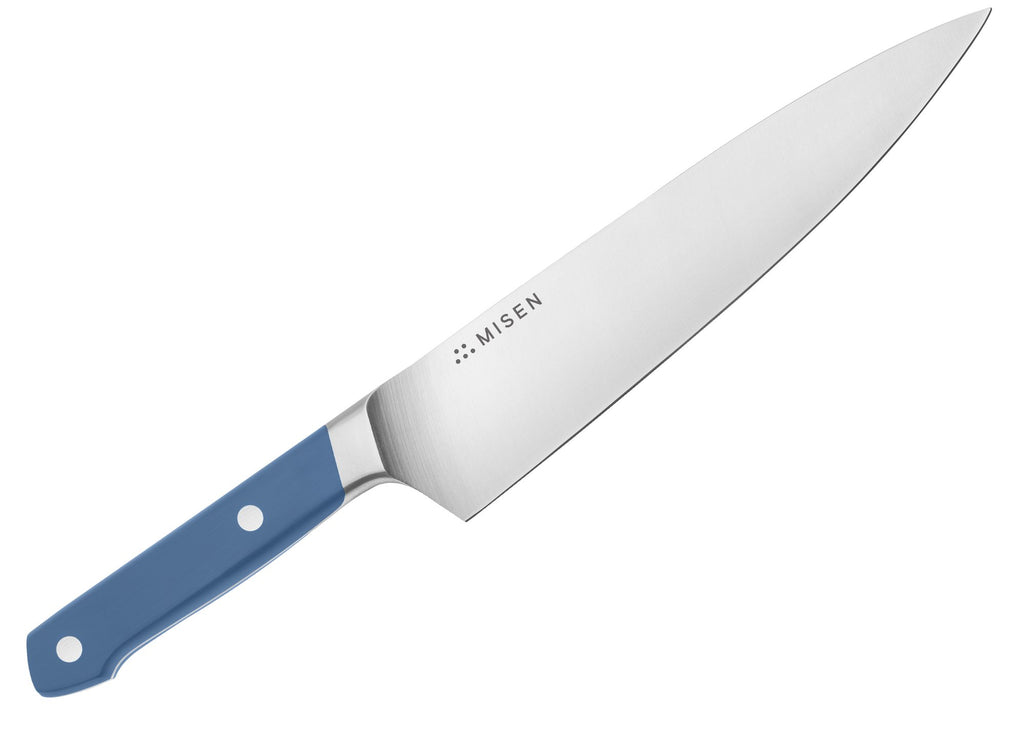 If there’s one knife you need in the kitchen, it’s a good all-around chef’s knife.
If there’s one knife you need in the kitchen, it’s a good all-around chef’s knife.
The name alone is enough to tell you just how important this knife is. A chef’s knife, with its pointy tip and practical 8-10-inch blade length, is perfect for most every cutting need. Use it to chop meat, dice vegetables, and slice fruits. Plus, its broad blade, which spans anywhere from 1-2 inches wide, is also useful for crushing cloves of garlic or scooping ingredients from cutting board to bowl. A good chef knife can easily be used to prepare everything for an entire meal, and is therefore the best knife to have in your kitchen.
Paring Knife
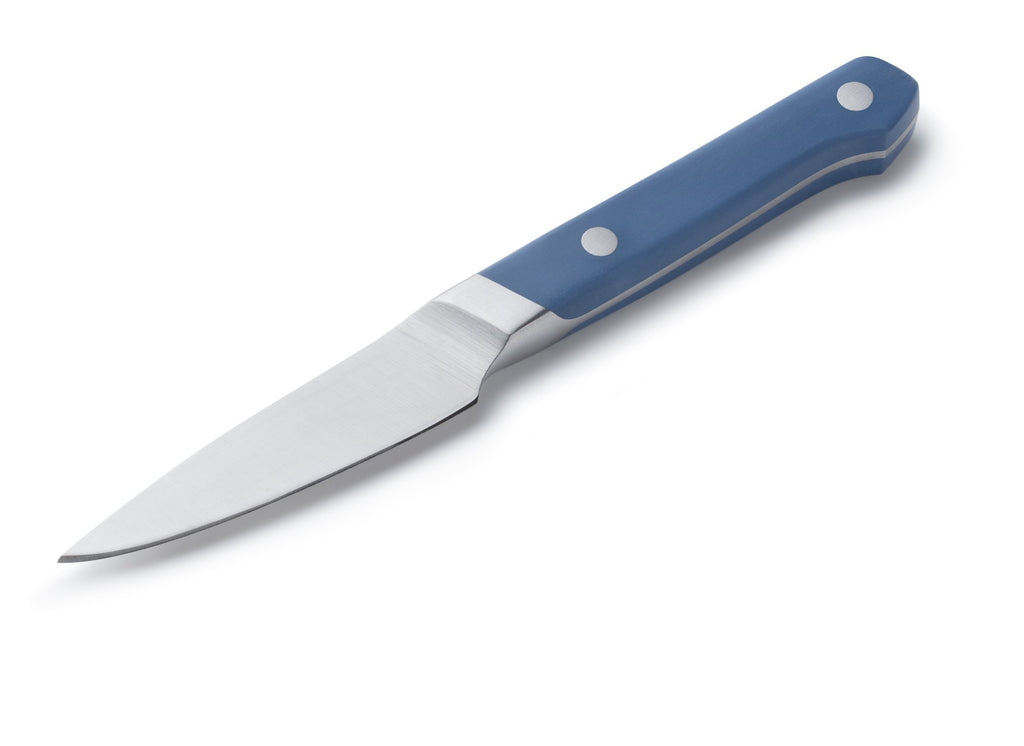 Thanks to their small size, paring knives are perfect for detailed tasks.
Thanks to their small size, paring knives are perfect for detailed tasks.
Think of this as a smaller version of a chef’s knife. With a blade that’s anywhere between 2.5-4 inches long — and the entire knife less than 10 inches — a paring knife is designed to fit comfortably in your hand. This makes it easy to manipulate and maneuver, and perfect for small, precise tasks. For example, peeling apples, deveining shrimp, removing pepper seeds. Whenever you feel a chef’s knife is too long, too large, or too much trouble for a task, a paring knife is what you need.
Serrated Knife (a.k.a. Bread Knife)
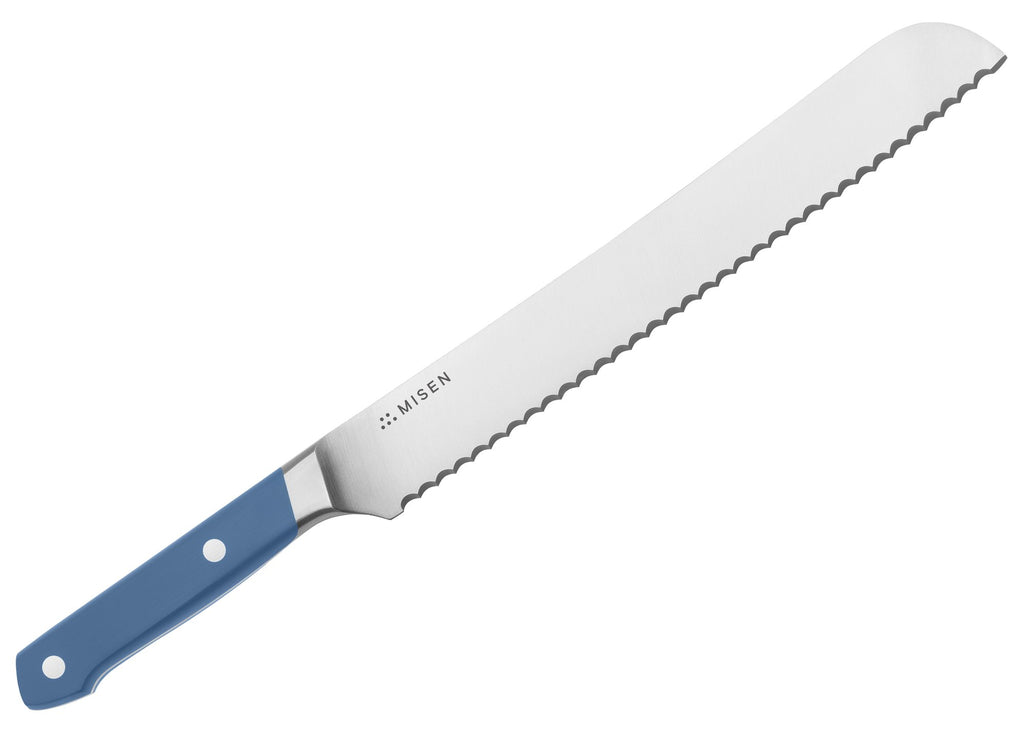 More than just a “bread knife,” serrated knives can be used to cut into delicate ingredients with soft or hard skin.
More than just a “bread knife,” serrated knives can be used to cut into delicate ingredients with soft or hard skin.
This knife stands out thanks to its distinct serrated edge. Although it may not be used as often as a chef knife or paring knife, a serrated knife can do much more than simply slice bread (although that’s definitely important). Typically between 6-10 inches, the serrated blade is perfect for “biting” into trickier surfaces and then sawing, rather than slicing, through the ingredient. The slippery skin of tomatoes, the thin exterior of peaches, the varied textures of a frosted cake — these are all times when a serrated blade would work better than a straight-edged sharp knife.
The Key Points
A professional knife set is not one just used by professionals. Rather, they’re a set of knives made with high-quality material, functional design, and with professional results in mind. When looking for your own set of knives, whether it's a starter set or something more high-end, just remember to begin with the essentials and take it from there.
